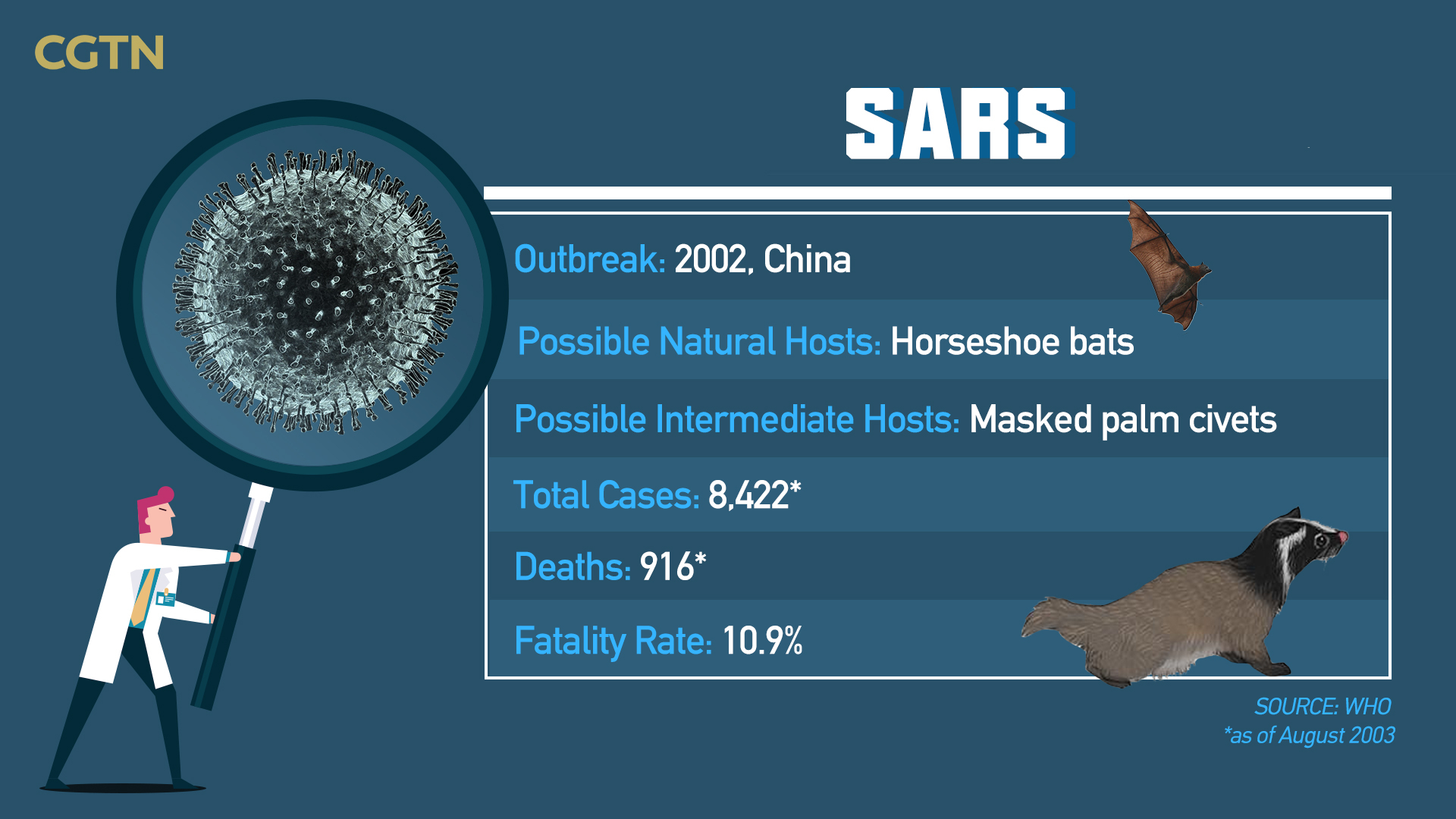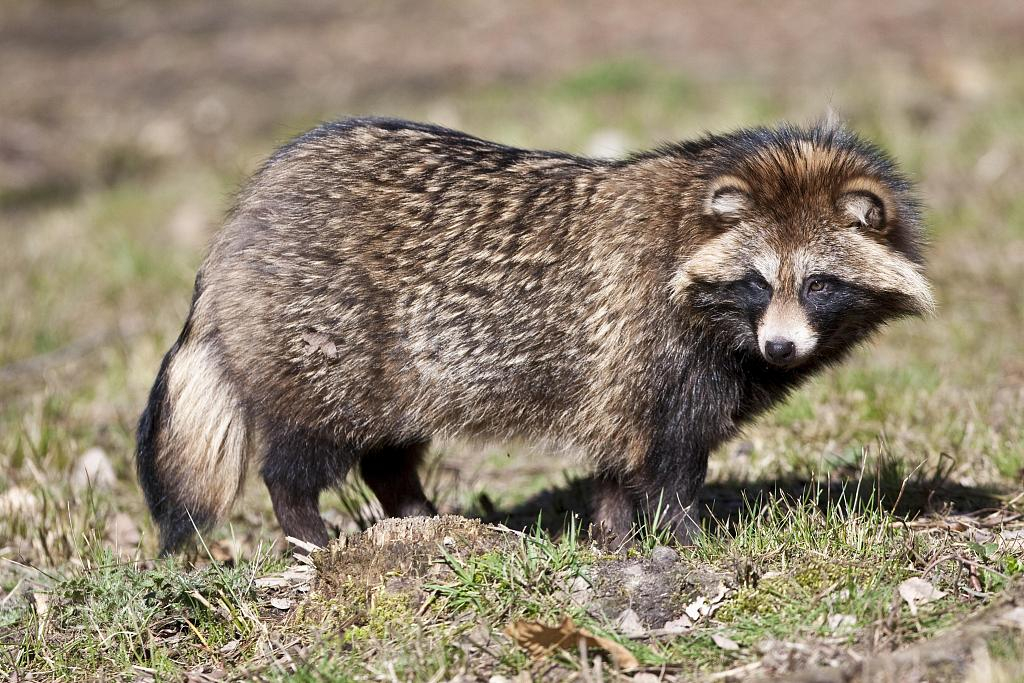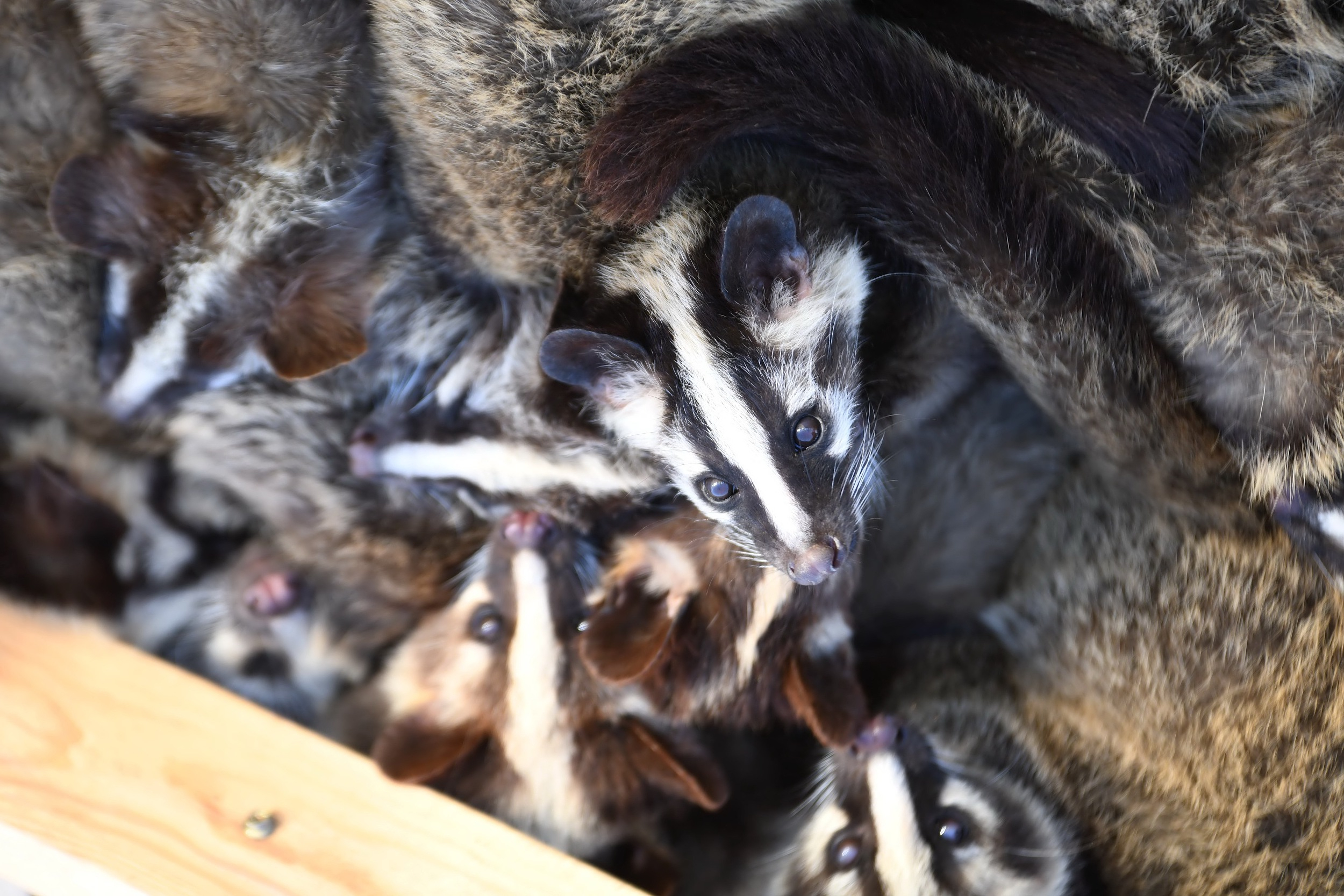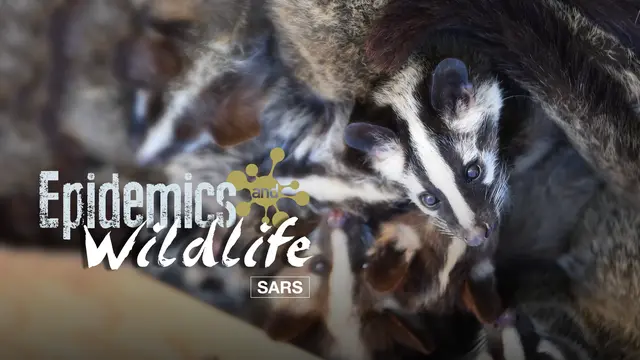Many Chinese people still remember the strong smell of disinfectants and Chinese herbal medicine, Ban Lan Gen granules, which was said to be able to prevent the Severe Acute Respiratory Syndrome (SARS) during the 2002-2003 outbreak. The masked palm civet, the host of the SARS virus, left a deep impression on the public as well.
How did the cat-like creature with its distinctive white strips on its head become a suspect? We need to trace back the origin of the outbreak. The early cases of SARS in south China's Guangdong Province had a history of contact with animals either through trade in markets or restaurants.

Facts on SARS. /CGTN Graphic by Liu Shaozhen
In a live animal market in Shenzhen, Guangdong Province, coronaviruses closely related to SARS-CoV were detected in three masked palm civets (
Paguma larvata
) and one raccoon dog (Nyctereutes procyonoides
) according to a 2003 study
. The neutralizing antibodies against the virus were also found in two Chinese ferret badgers (Melogale moschata
).
The research indicated that at least three different animal species were infected by viruses closely related to SARS-CoV, but masked palm civets became the main target responsible for animal-to-human SARS-CoV transmission in the following studies. In
a 2016 review paper
, researchers speculated that the reason might be that the rate of detection was higher in masked palm civets or because they are mostly traded in south China.

Raccoon Dog (Nyctereutes procyonoides). /VCG
Before the SARS outbreak, there were nearly 1,000 civet farms in China. The biggest sales market of civet cats was in Guangdong Province. After masked palm civets were considered as possible SARS carriers, about 10,000 civet cats were culled in January 2004. The price of one kilo of civet meat slumped from over 200 yuan to less than 40 yuan, and still people were unwilling to buy them, which was a big blow to the industry.
In
a 2004 study
comparing market and farmed civet cats, no significant level of SARS-CoV antibody was found in any of the 75 serum samples taken from six civet farms in three provinces, but 14 of 18 samples taken from an animal market in Guangdong Province in January 2004 had neutralizing antibodies to SARS-CoV.
Similar results were shown in another
2005 study
. While all 91 palm civets and 15 raccoon dogs from a Guangdong live animal market tested positive for SARS-CoV-like virus, 1,107 palm civets sampled at 25 farms in 12 provinces in 2004 had negative results. These studies suggest that there might be other animals involved in SARS-CoV transmission in the animal market or other trading activities.

Masked palm civets and other animals get together to keep warm and resist the cold in a Nanjing zoo in east China's Jiangsu Province. /VCG
Although naturally infected masked palm civets did not show clinical signs, they developed fever and exhibited lethargy and reduced appetite when experimentally infected. It indicated that masked palm civets were unlikely to be the natural reservoir of SARS-CoV, but also victims of the disease.
In 2017
, a team led by Professor Shi Zhengli from Wuhan Institute of Virology of the Chinese Academy of Sciences found all the genetic building blocks of the SARS virus detected in humans in a bat cave in southwest China's Yunnan Province. Horseshoe bats were later identified as the reservoir of SARS virus.
However, scientists still wonder how a virus found in bats in Yunnan could travel 1,000 kilometers to jump to animals and humans in Guangdong, considering there were no suspected cases in Yunnan. A virologist, Tu Changchun, considered the result as 99 percent persuasive. The evidence would be more complete if scientists could prove the SARS virus strain in humans can transfer from bats to other animals, such as masked palm civets.
About 'Epidemics and Wildlife'
Nowadays, 70 percent of epidemics or pandemics are connected with wildlife. As humans continue to consume game meat and encroach on the habitat of wild animals, these viruses carried by them are more likely to be transmitted to humans. In this series, CGTN shows you how wildlife are connected with each epidemic such as Marburg and Ebola.
For more:
Can we drink camel milk amid MERS outbreaks?
Are pangolins intermediate hosts of novel coronavirus?
How Nipah affects pig exports in Malaysia?
How are horses related to fatal Hendra virus?
How Ebola affects gorillas and chimpanzees?
How are African green monkeys linked to Marburg virus?
(Cover image via VCG, designed by CGTN's Li Xiaojie.)
(If you want to contribute and have specific expertise, please contact us at [email protected].)
 简体中文
简体中文



